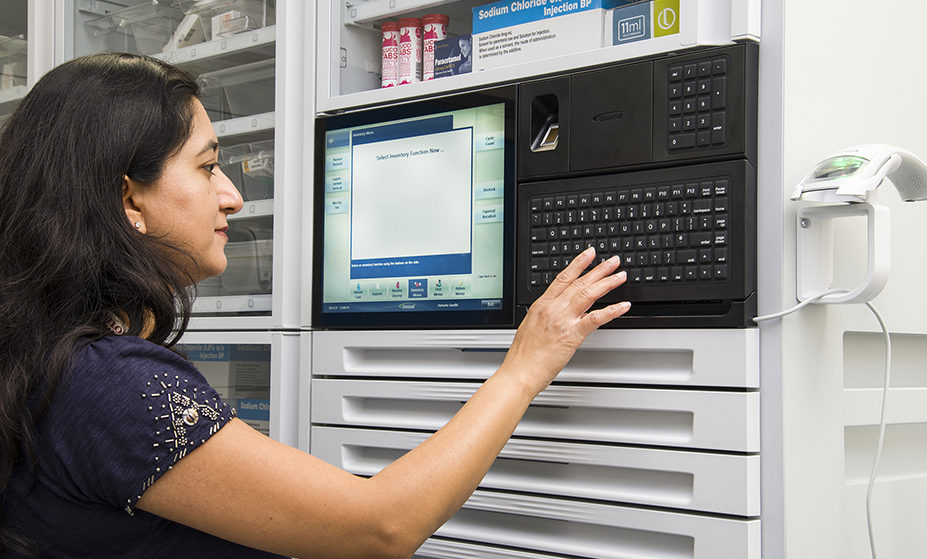
Working as an acute medicine pharmacist over the past 13 years has brought both triumph and challenge in equal measure. However, an ongoing source of frustration throughout my career has been prescribing errors that occur owing to the lack of information available when a patient is admitted to hospital.
In 2015, I was overjoyed to move over to the emergency department (ED) at Wexham Park Hospital in Slough, Berkshire, as part of the ‘Pharmacists in Emergency Departments’ (PIED) study, which — as the name suggests — aimed to evaluate the role of pharmacists working as advanced practitioners in the ED.
I saw the study as my chance to become embedded within the ED team and be released from my acute medicine role within the same trust. I would be checking drug histories and writing drug charts myself, ensuring that they were accurate from the outset.
Following the five-week study, during which time I observed 400 consultations, I was offered the opportunity to continue working in the ED in a permanent role. Thinking like an acute medicine pharmacist, I started to use summary care record access, speak to patients or carers and verify their medicines histories, then write up drug charts for patients due to be admitted. The on-take teams — the specialist teams that are on call in the ED — loved my contribution and this gave me a lot of satisfaction.
However, as I spent more time in the ED, becoming more embedded within the team, more pharmacy-related issues became apparent to me.
One year after implementing automated cabinets, drug spend came down by an incredible £131,000
One problem was that multiple keys required for the different medicine cabinets featured coloured stickers to match each key to its lock — a dangerous time-wasting system, because the stickers often fell off.
After years of lusting after automated medicines cabinets, which allow fingerprint, rather than key, access, at the annual Clinical Pharmacy Congress, I excitedly proposed this to my team, but the idea was quickly dismissed on the grounds of cost; the cabinets are usually around £20,000 each.
Undeterred, I decided to implement digital keys and locks — a system whereby there was just one key for all the locks with an audit trail, and every nurse could have a key while they worked their shift. This was a much cheaper option, required minimal disruption and was well-received by the team.
During my time in the ED, I have also initiated other improvement projects, including overhaul of the stock lists, exploring the setting up of electronic FP10 prescription form printing and supporting the ambulatory emergency care unit (AECU). Most significantly, I was involved in planning for the move into a new multi-million pound emergency assessment centre that would house the new emergency department, acute wards and the AECU.
This presented a chance for me to push for the automated medicines cabinets one more time. I arranged a team visit to another NHS hospital, which was using the cabinets in its ED, and this was enough to convince my colleagues. After that, I successfully wrote the business case to secure the funding for the cabinets for all nine treatment rooms in the emergency assessment centre — not just for the ED. I was thrilled with the outcome.
In April 2019, we were set to move into our shiny, new building. The automated medicines cabinets had been configured and loaded; fridge locks with continuous temperature monitoring had been fitted; and emergency trollies loaded with emergency drugs, such as adrenaline, atropine and naloxone, were available in every resuscitation cubicle.
The move took place overnight and I was there, moving controlled drugs and ensuring that all went smoothly, especially with the new cabinets; the buzz I felt was indescribable.
One of the benefits of the automated cabinets is to reduce overstocking and, after the first year of their implementation, the ED’s drug spend came down by an incredible £131,000 despite increasing patient numbers.
Since then, life has continued with many challenges and wins; 2020 was, perhaps unsurprisingly, the biggest challenge of all. We had to reconfigure the emergency department to allow for expanding COVID-19 zones and having ‘hot’ (COVID-19 positive) and ‘cold’ (COVID-19 negative) resuscitation areas, meant that the medicines had to be moved accordingly.
Ultimately, I believe that better communication and education is the key to reducing errors and, as a result, I am now involved in the education of nurses and doctors.
I deliver training sessions on patient group directions and stock/controlled drug handling to nurses, as part of the ED team, and I also participate regularly in the junior doctors’ induction programme and education sessions. ‘How to calculate gentamicin doses’ is a particularly popular session, with junior doctors often stopping to excitedly tell me that they have just calculated a gentamicin dose.
The ED can be foreign territory for pharmacy staff, so I introduced short rotations for preregistration pharmacists and technicians, including spending a day with the paramedics, which has been a massive hit.
According to data collated by the trust, on average, 30% of patients that present to the ED are admitted. Without a dedicated pharmacy team in the department, I have learned that I can have a greater impact on patient care by being involved in governance, working with the emergency department safety team, service development and staff education. On average, I am directly involved in 5–10% of admissions, which usually involves multiple clinical interventions.
Working in the ED has been very different from what I envisaged, and I know that it is still an unknown to many. Every day is different and the challenges faced provide a daily adrenaline rush. I cannot see myself going back to acute medicine and quite frankly, do not know how so many EDs around the country function without a dedicated pharmacist.
I feel very loved when I come back from annual leave as my team is always overjoyed to have me back.
Natasha Gandhi is lead pharmacist in the emergency department at Wexham Park Hospital in Slough, Berkshire


